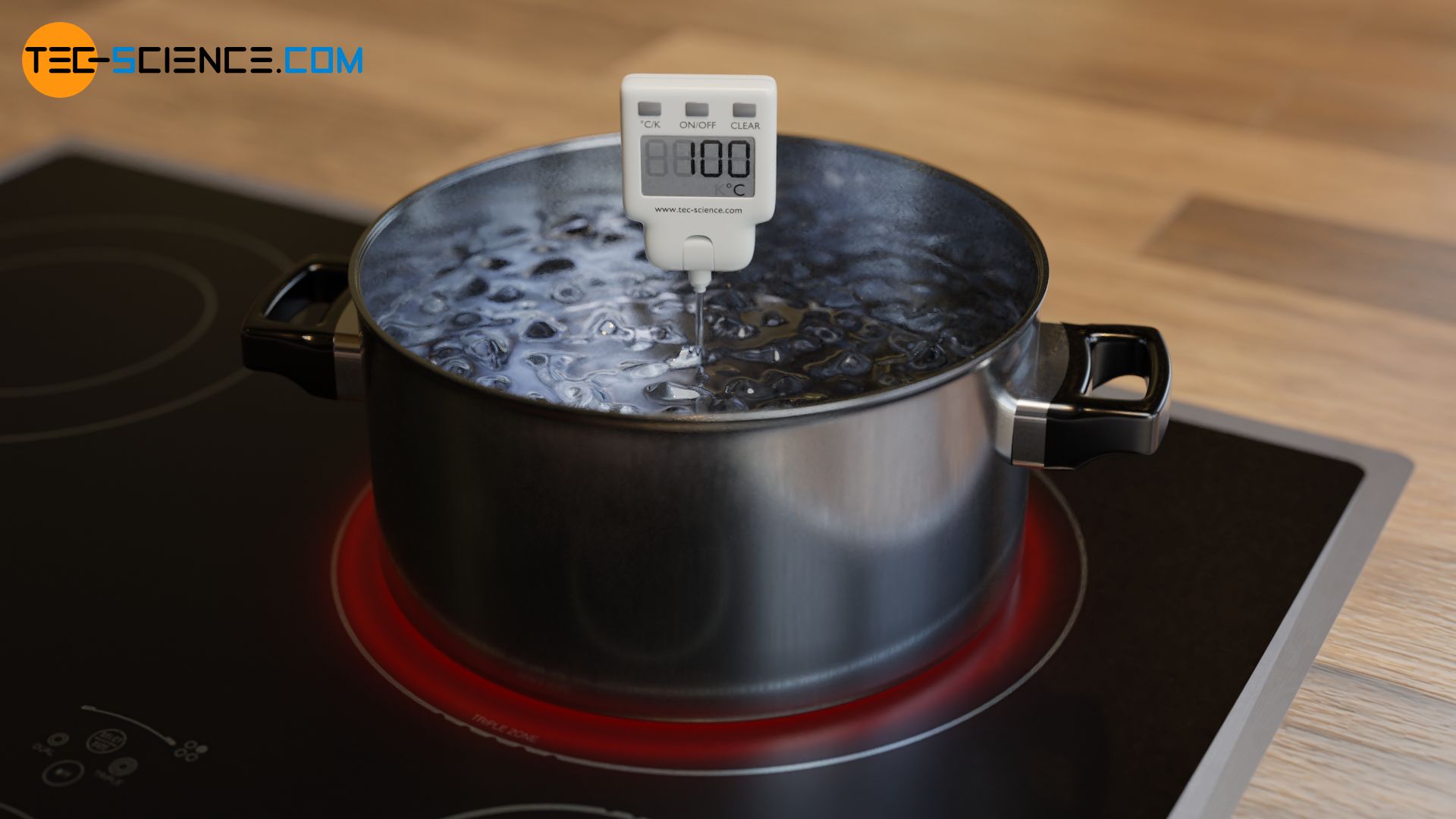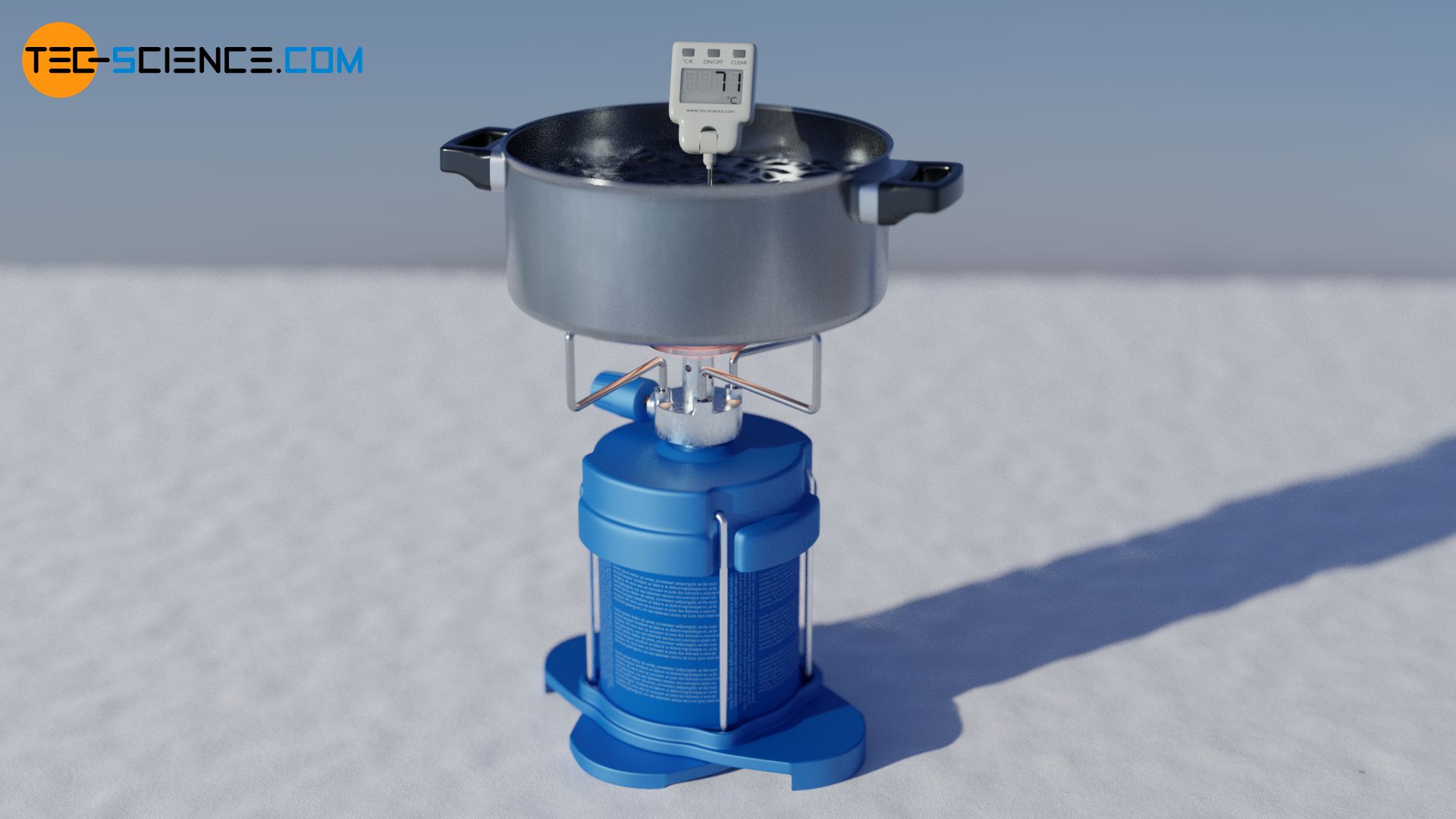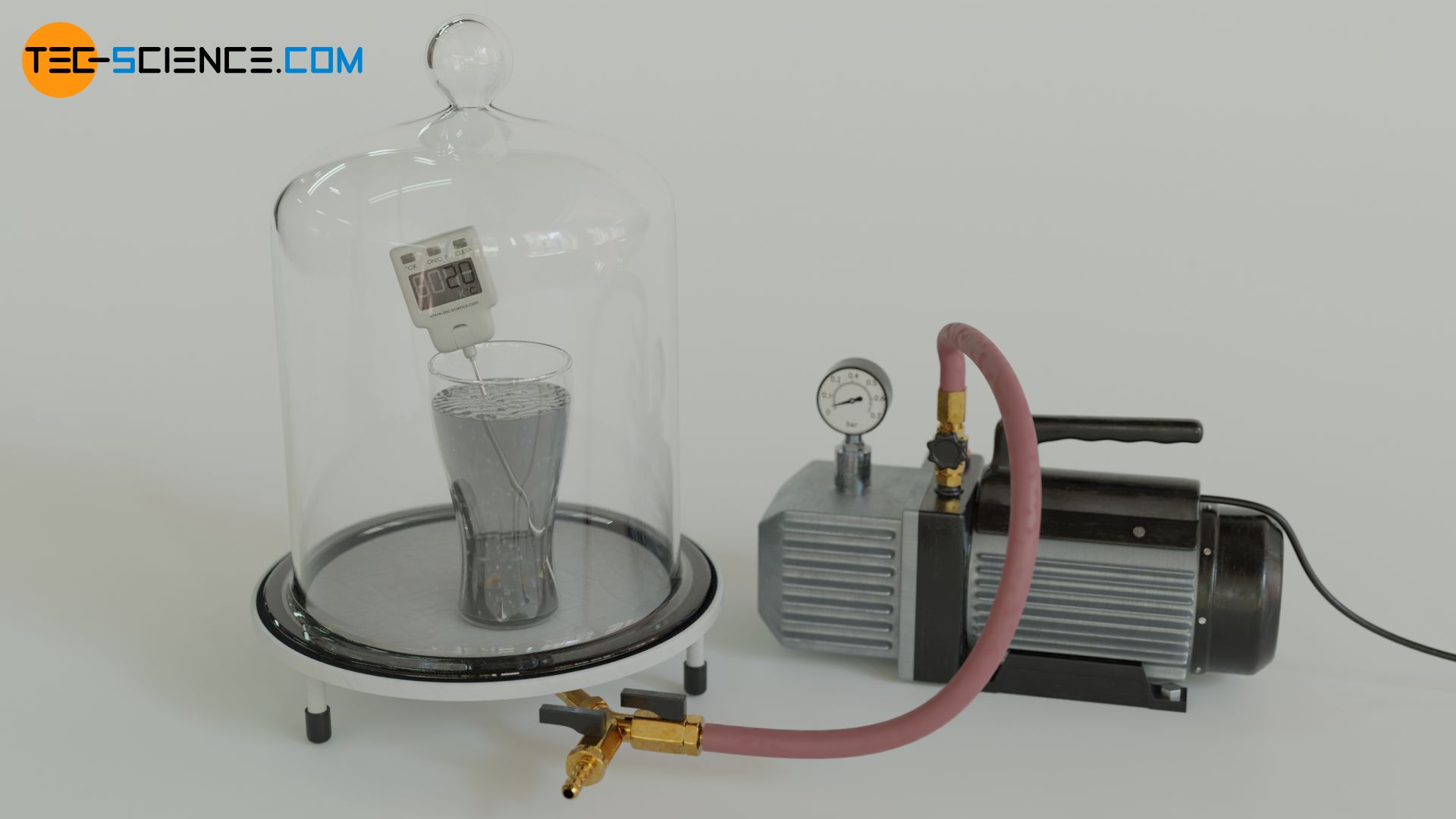Due to the lower pressure, the boiling point of water decreases and the water boils earlier at high altitudes.
Cooking on Mount Everest
With increasing altitude above sea level, the air pressure decreases more and more (see also the article on barometric formula). This shows the phenomenon that water begins to boil at significantly lower temperatures than one is used to at lower altitudes. At sea level at a pressure of 1.013 bar, water begins to boil at a temperature of 100 °C.

However, on Mount Everest at an altitude of 8849 m, the air pressure is only around 0.325 bar. Due to this significantly reduced pressure, the water already begins to boil at a temperature of around 71°C. However, since the temperature does not rise any further during boiling, the cooking of foods such as potatoes or pasta thus takes significantly longer (see also the article Why does the temperature remain constant during a change of state?).

Explanation with the particle model
The fact that the boiling point depends on the ambient pressure applies not only to water, but ultimately to all liquids. In particular, it is true that the boiling point decreases with decreasing pressure. This phenomenon can be explained qualitatively with the particle model of matter.
During boiling, the liquid vaporizes and becomes gaseous. In this vaporization process, energy is absorbed by the liquid and added to the molecules, allowing them to break free from the molecular binding forces of the liquid and enter the gas phase. At an ambient air pressure of 1 bar, vaporization of water takes place at a temperature of 100 °C.

However, if the ambient air pressure is increased, the air molecules collide more strongly with the surface of the liquid. In the process, the air molecules push the liquid molecules back into the liquid, so to speak. It thus becomes more difficult for the molecules in the liquid to pass into the gas phase. The water molecules consequently require greater energy and thus a higher temperature in order to escape the liquid phase. For this reason, with increased ambient air pressure, a higher boiling temperature is required to vaporize a liquid or bring it to a boil.
The boiling temperature of a liquid increases with increasing ambient pressure!
Increase of boiling temperature at elevated ambient pressure (pressure cooker)
Under high ambient pressure, water consequently also boils at higher temperatures. This is used, for example, in so-called pressure cookers to heat the water to over 100 °C. A pressure cooker seals the pot of water gas-tight. During vaporization, water normally expands 1700 times. However, since this is not possible with a sealed pot, the pressure consequently increases. A pressure relief valve usually limits the pressure to a maximum of 2 bar. The boiling temperature rises to around 120 °C at this increased pressure. As a result, food prepared in the pot is no longer cooked at just 100 °C, but at 120 °C!

Decrease of boiling temperature at reduced ambient pressure
If an increase in the ambient pressure leads to an increase in the boiling temperature, then in the opposite case this means that a decrease in the ambient pressure results in a decrease in the boiling temperature. And this is exactly what explains why water on Mount Everest boils at already 71 °C due to the lower pressure of only 0.325 bar. Preparing food that normally requires a temperature of 100 °C in water is therefore not so easy at high altitudes. At this point, one would have to use the pressure cooker already explained to obtain increased pressure and raise the boiling temperature.
The following experiment provides an impressive demonstration of the decrease in boiling temperature with decreasing pressure. For this purpose, a glass with water is placed under a vacuum chamber. A thermometer is placed in the glass to observe the temperature. The thermometer indicates a temperature of 20 °C. Now the vacuum pump is switched on and thus the pressure is reduced step by step. Below a pressure of about 0.023 bar, one then observes small bubbles rising in the water. This is the typical phenomenon when water boils, with the temperature still at 20 °C. And indeed, at a pressure of 0.023 bar, the water already begins to boil at 20 °C.







